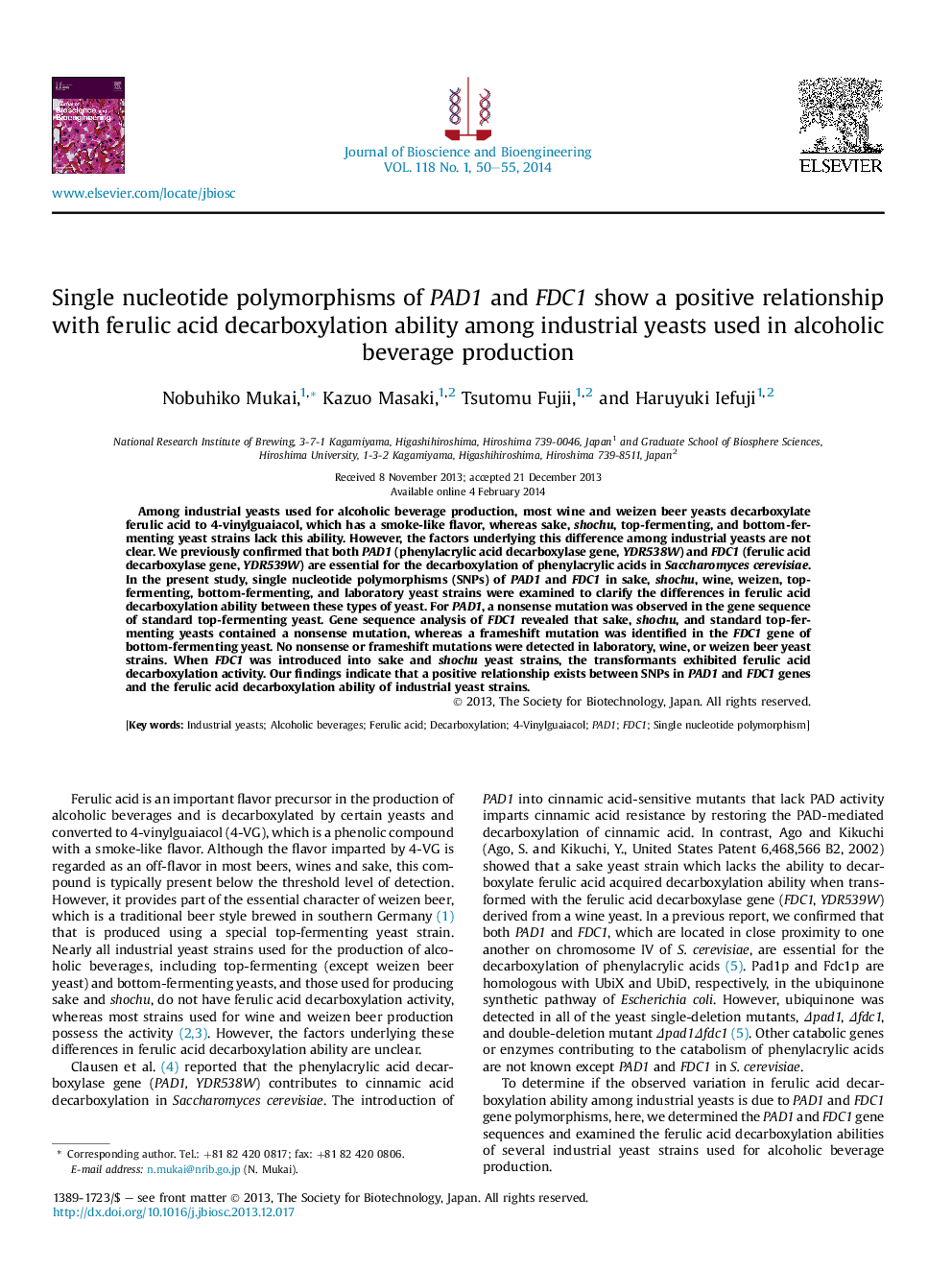| Article ID | Journal | Published Year | Pages | File Type |
|---|---|---|---|---|
| 20534 | Journal of Bioscience and Bioengineering | 2014 | 6 Pages |
Among industrial yeasts used for alcoholic beverage production, most wine and weizen beer yeasts decarboxylate ferulic acid to 4-vinylguaiacol, which has a smoke-like flavor, whereas sake, shochu, top-fermenting, and bottom-fermenting yeast strains lack this ability. However, the factors underlying this difference among industrial yeasts are not clear. We previously confirmed that both PAD1 (phenylacrylic acid decarboxylase gene, YDR538W) and FDC1 (ferulic acid decarboxylase gene, YDR539W) are essential for the decarboxylation of phenylacrylic acids in Saccharomyces cerevisiae. In the present study, single nucleotide polymorphisms (SNPs) of PAD1 and FDC1 in sake, shochu, wine, weizen, top-fermenting, bottom-fermenting, and laboratory yeast strains were examined to clarify the differences in ferulic acid decarboxylation ability between these types of yeast. For PAD1, a nonsense mutation was observed in the gene sequence of standard top-fermenting yeast. Gene sequence analysis of FDC1 revealed that sake, shochu, and standard top-fermenting yeasts contained a nonsense mutation, whereas a frameshift mutation was identified in the FDC1 gene of bottom-fermenting yeast. No nonsense or frameshift mutations were detected in laboratory, wine, or weizen beer yeast strains. When FDC1 was introduced into sake and shochu yeast strains, the transformants exhibited ferulic acid decarboxylation activity. Our findings indicate that a positive relationship exists between SNPs in PAD1 and FDC1 genes and the ferulic acid decarboxylation ability of industrial yeast strains.
